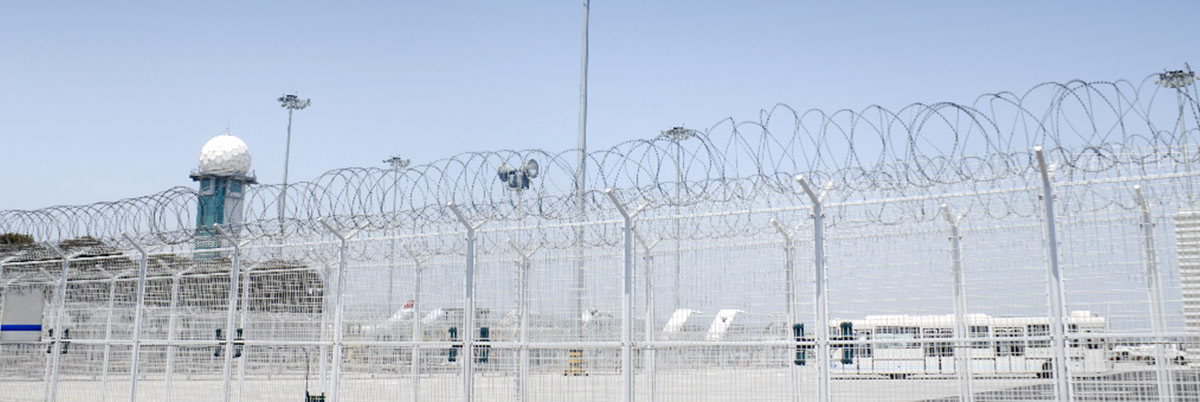
Burglary Prevention Tips for Building Managers
Fiber Optic Security System
Install security cameras
When you think of building security, installing closed-circuit television (CCTV) video surveillance might be the first measure that comes to mind. The presence of security cameras serves two primary purposes. First, it provides useful footage if a break-in or another suspicious activity occurs on your property. Second, visible cameras may be enough to deter would-be thieves and prevent a burglary from ever happening.
Look for high-quality security cameras with features such as night vision, motion activation, sound recording and more. Cheap cameras do you no good if you’re unable to make out the perpetrator from the captured footage.
Install an intrusion detection system
No commercial security system is complete without an alarm that goes off when an intruder is detected after business hours or when a thief attempts to rob you during the day. This system might include basic smoke detectors, motions sensors, and window and door contacts, or it might be more elaborate with the addition of panic switches and wireless services. Regardless, all good intrusion detection systems have battery backups in case the power is cut.
A security system is most effective when paired with automatic monitoring services. This sends an alert to the local police station so law enforcement can rush to the premises and hopefully catch the burglar in the act.
Install an access control system
When you have specific areas in your building that require extra security, an access control system could be the answer. Using access cards or biometric recognition to allow or deny access to a room is much more secure than a standard key because you can monitor who comes and goes. Obviously, a biometric recognition system is the securest option among all these choices. The computerized system records the time, date and location where certain employees or guests enter so you can keep track of comings and goings in your building.
Choose durable windows and exterior doors
All operable windows should have locking mechanisms and first-floor windows should feature impact-resistant glass. Bars, grilles and grates welded over skylights, ventilation openings and crawl holes provide extra security for these potential entry points.
All exterior doors should be constructed of 16-gauge steel or aluminum alloy. Glass doors should feature impact-resistant glass to deter thieves. Double doors should be locked with heavy-duty, multi-point, long-flush bolts. Remember, door frames must be as strong as the doors themselves or a burglar may be able to break in by circumventing the frame.
Be careful with keys
If you secure your building, individual offices, safes and vehicles with standard keys, make sure you know who has been entrusted with which keys. Keep an accurate record of issued keys and lock away spares for safe keeping. To prevent unauthorized copies, stamp all keys with the words “do not duplicate.”
Take lighting seriously
In an effort to save on your electric bill, you might be tempted to turn off all business lights at the end of the night. Unfortunately, darkness is a burglar’s best friend, so keeping some areas illuminated from dusk until dawn is important for the best security.
First, make sure your business signage and address are illuminated and visible from the street so police can easily locate your building. Next, keep a few interior lights on so law enforcement and civilians can easily see inside. Then install outdoor lighting in strategic locations to improve security around the perimeter, including along alleyways and on the roof.
Practice good security protocols
Train all employees with keys and access cards on how your building’s security systems and procedures work. For example, assign the task of locking up and arming the security system to the closing shift employee. Make sure all employees understand that their entrances and exits from secure rooms with access cards are recorded and tracked. Make them aware of the penalties of giving their access cards or keys to unauthorized personnel.
If a break-in does occur, make sure your employees understand the importance of preserving the crime scene. Instruct them not to disturb anything to increase the chances of finding the evidence needed to apprehend the perpetrator.
Source: State Systems Inc

Fiber Optic Security System.
Perimeter Security, Video Intrusion Detection, Fiber Optic Security System, Marine Security, Marine Net, Under Water Marine Net Detection, Under Water Marine Detection, Under Water Security, Security Under Water, Perimeter Security, Fiber Optic Sensor, Fence Detection, Fiber Optic Net, Airport Security, Nuclear Facilities Security, Nuclear Security, Government Security, Perimeter Security for Federal Government, Fiber Optic for Perimeter Security, Perimeter Security for Oil and Gas, Perimeter Security for Water Utilities, Perimeter Security for Treatment Plants, Perimeter Security for Storage Tanks, Perimeter Security for Dams, Perimeter Security for Reservoirs, Perimeter Security for Electric Utilities, Perimeter Security for Generation Plants, Perimeter Security for Sub-Stations, Perimeter Security for Switchyards, Perimeter Security for Chemical Facilities, Perimeter Security for Chemical Plants, Perimeter Security for Refineries, Perimeter Security for LNG Plants,Perimeter Security for Storage Facilities, Perimeter Security for Transportation Industry, Perimeter Security for Airports, Perimeter Security for Seaports, Perimeter Security for Roads and Railroads, Perimeter Security for High Security Sites, Perimeter Security for Government Facilities, Perimeter Security for Nuclear Plants, Perimeter Security for Military Bases, Perimeter Security for Prisons, Perimeter Security for Oil and Gas, Perimeter Security for Oil Fields, Perimeter Security for Storage Facilities, Perimeter Security for Refineries.



